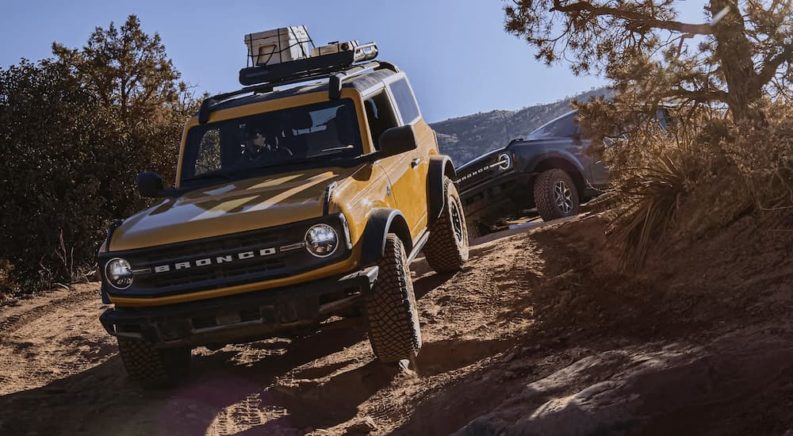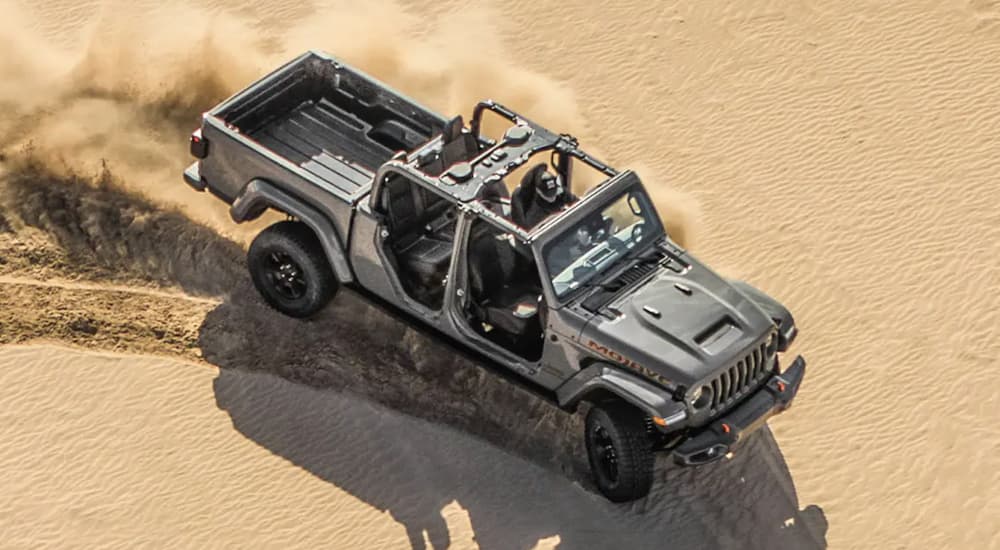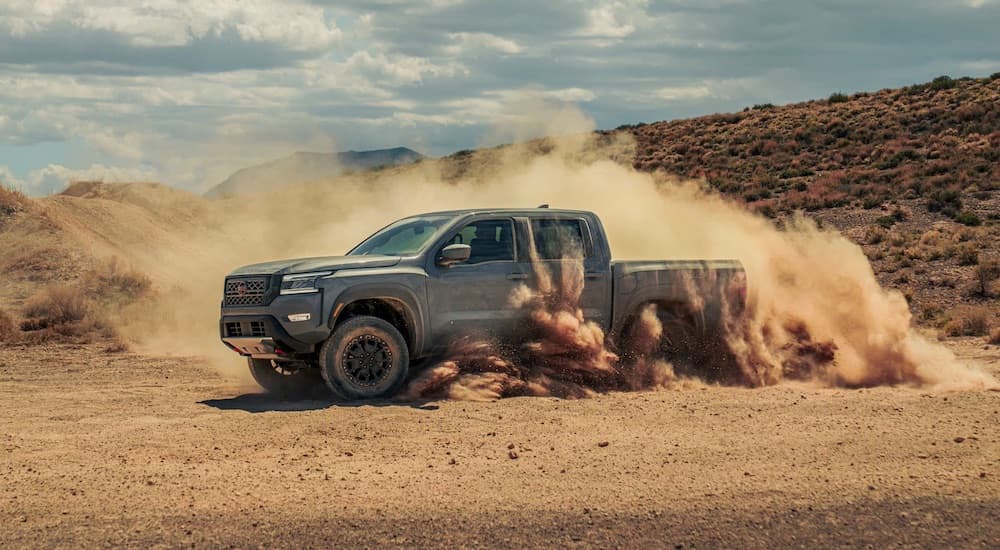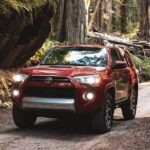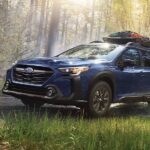With more off-road-focused vehicles hitting the market each year, today’s SUVs have never been more capable when it comes to enjoying a little off-road fun. From Chevy’s Z71 trims complete with skid plates, tow hooks, and all-terrain tires to GMC’s AT4 series offered with improved approach angles and a height-adjustable air suspension as standard fare, you’re bound to find a variety of alluring off-road models when looking at used SUVs. The SUV segment has never been more rugged, but that doesn’t mean there isn’t some room for improvement.
Off-roading is a demanding hobby for both drivers and their vehicles, but there are plenty of handy aftermarket accessories and mods designed to make the road less traveled easier to navigate. Whether you’re looking to kick up a little mud, scale some steep rock faces, race through the desert, or enjoy some overlanding, these upgrades can be vital with even a small investment making the difference between a successful day out on the trail and one that ends in disappointment. So where should you start? Let’s take a look at some of the most popular off-road SUV modifications, which should give you a handy guide to preparing your vehicle for the rigors of off-road use.

Steel Bumpers
The auto industry and the vehicles we drive have evolved in numerous ways over the years. For example, an increased focus on pedestrian safety has seen plastic bumpers replace the solid metal designs of old. I’m not complaining, especially when you consider the corresponding reduction in fender benders, but there are still some driving scenarios where a good old-fashioned metal bumper would come in handy.
Off-roading is one of those scenarios. A plastic bumper might be fine for navigating your local grocery store parking lot, but when you’re on an off-road trail littered with rocks, logs, and other obstacles, it can come up short. A steel bumper is a popular modification in the off-road scene, allowing drivers to aggressively tackle challenging terrain without having to worry about any damage a plastic bumper would incur. The extra ground clearance is also nice, and aftermarket steel bumpers have the added benefit of making an SUV look taller, as they tend to be narrower and ride a little higher than the stock plastic bumpers you’ll find on most SUVs.
Lift Kits
If the extra ground clearance provided by a new steel bumper isn’t quite enough, there are plenty of other modifications to try out. A lift kit is one of the most popular, allowing drivers to ride high while also lending the SUV an aggressive, sporty look. A lift kit is essentially a new set of upsized suspension components that raise the frame and body of the vehicle further off the ground while also allowing for the installation of larger tires–up to 40 inches in some cases.
From new shocks and struts to replacement leaf springs, CV joints, and control and trailing arms, a lift kit has all the components you need to take your off-roading adventures to the next level. Lift kits come in a variety of sizes, ranging from two to 10 inches, but they’re not necessarily the easiest modification to make. The average lift kit install can take anywhere from four to eight hours and requires a decent working knowledge of some basic automotive concepts, but luckily there is an alternative.
Proper Tires
For those who don’t want to deal with a messy lift kit install, upsizing an SUV’s tires is an easy way to gain a little extra height without dissecting your entire suspension. The average mid-size SUV comes with tires that usually hover around 29 to 30 inches in diameter, but are typically built with wheel wells that can accommodate tires up to 32 inches in diameter. That two inches might not seem like much, but it can make a big difference when you encounter a particularly nasty off-road obstacle.
But switching out your stock tires for a new set isn’t all about height. Traction is king when it comes to off-roading, which is why so many off-road vehicles come with locking front and rear differentials, traction control, and any number of gizmos and gadgets designed to help you get a grip when you need it most. These components certainly do the trick, but even the best parts won’t matter if you’re riding on stock tires.
That’s where all-terrain and mud-terrain tires come into play. Built with specialized tread patterns, wide grooves, and thick tread blocks, off-road tires are designed to maximize traction, grabbing hold of loose surfaces and helping drivers to power through any conditions. They’re also made of sterner stuff than your average tire, with reinforced sidewalls that offer increased resistance to punctures. These all- and mud-terrain tires might not be the most comfortable–or quiet–when riding on paved surfaces, but they’re indispensable for the avid off-roader.
Additional Lighting Options
As any driver who has ever been temporarily blinded while driving at night can tell you, the average vehicle’s headlights seem to become brighter every year. This new breed of high-intensity headlights might work well for everyday driving, but even they can start to look a little wimpy when you leave paved roads behind. We tend to take ambient light for granted when driving around the city or even some rural areas, but the lack of illumination becomes very noticeable as soon as the sun goes down on your favorite trail. That’s why auxiliary lights are such a popular modification for the off-road set, allowing you to safely navigate off-road terrain well after the sun has set. From halogen spotlights to high-intensity discharge (HID) Xenon lights, and LED options, there are plenty of auxiliary lighting systems on offer.
When choosing a set of off-road lights, it’s important to consider what sort of conditions they’ll typically be used in. All types of light aren’t created equal, so it’s also worth doing a little basic research. Lights with amber lenses, for example, excel at cutting through fog and dust. The temperature of the light can also have a big impact, with different temps looking much whiter while others lend more of a warm, yellow glow. There’s also the matter of range: HID Xenon lights shine about twice as far as many LED options. Some lights might also not be legal for use on public roads, so make sure the option you settle on complies with all local guidelines.
Receiver Hitches
SUVs represent a real sweet spot between pickup trucks and cars, giving drivers a versatile vehicle that can excel in off-road situations while providing a comfortable ride for everyday driving, but what about towing? While the task has long been the purview of the pickup segment, many SUVs are just as capable when it comes to towing as long as they’re properly outfitted. Most SUVs don’t come standard with a tow hitch, though many automakers offer them as part of factory- or dealer-installed tow packages.
If your SUV didn’t come ready to tow, have no fear as it’s a relatively simple aftermarket modification. A receiver hitch is one of the most popular options as it can easily be bolted onto the underside of a vehicle, giving you a handy place to install a ball mount or any other hitch accessory you desire. The ball mount is the obvious choice if you’re looking to do a little towing, but all sorts of accessories can be attached to a receiver hitch, from bike and cargo racks to spare tire holders and even steps that allow for easier access to the cargo area.
Roof Racks
While SUVs don’t tend to lack storage, cargo space can come at a premium when you’ve got your ride packed for an extended off-road adventure. A roof rack is the easiest way to give your vehicle a little extra cargo space, turning the roof into the perfect spot to pack large, bulky items like coolers, kayaks, bikes, and luggage. Spanning much of the roof and typically built with raised sides to keep everything nice and secure, roof racks are the most versatile form of rooftop storage. Roof racks can also be the perfect platform for a rooftop tent, which is an increasingly popular option for off-roaders seeking a built-in sleeping solution that keeps them protected from wet surfaces and local wildlife.
Rooftop cargo solutions come in all shapes and sizes, and while roof racks are one of the most popular, they’re not the only option. Many vehicles come with pre-installed roof or side rails, and while these might look like an appropriate place to perch some gear, they’re intended more as anchor points for larger, more complex roof storage systems such as cross bars. Cross bars, which run perpendicular to roof rails, are the perfect way to secure rooftop racks for bikes, skis, and even canoes and kayaks.
Get Your SUV Ready for Your Next Adventure
There’s nothing like chewing through rough, sketchy off-road terrain behind the wheel of your SUV, but the last thing you want to do is hit the trail unprepared for the challenges you might face. Without the right equipment, your off-road excursion can go sideways in a hurry. Whether it’s a hardy steel bumper that can take the bumps and bruises that come with off-road driving, a lift kit or tires that give you some vital ground clearance, a rooftop rack for easily accessible storage, or lights to illuminate every twist and turn, aftermarket accessories are a worthwhile investment for any off-road enthusiast. With a little research, some trial and error, and a few hard-earned lessons out on the trail, it’s easy to turn even the most run-of-the-mill SUV into a true off-road contender.

